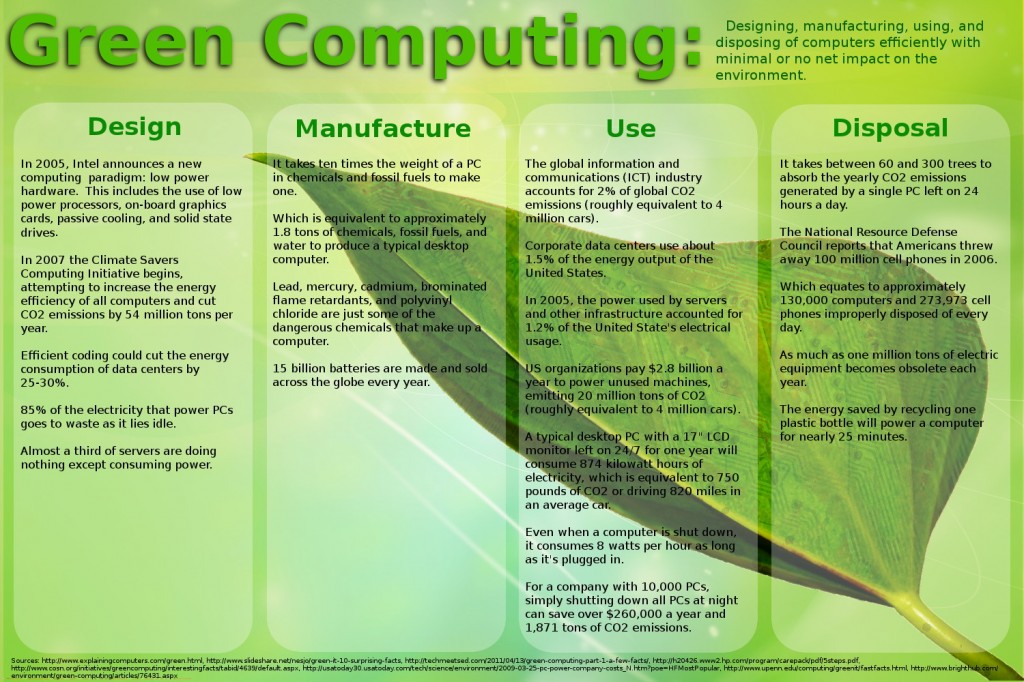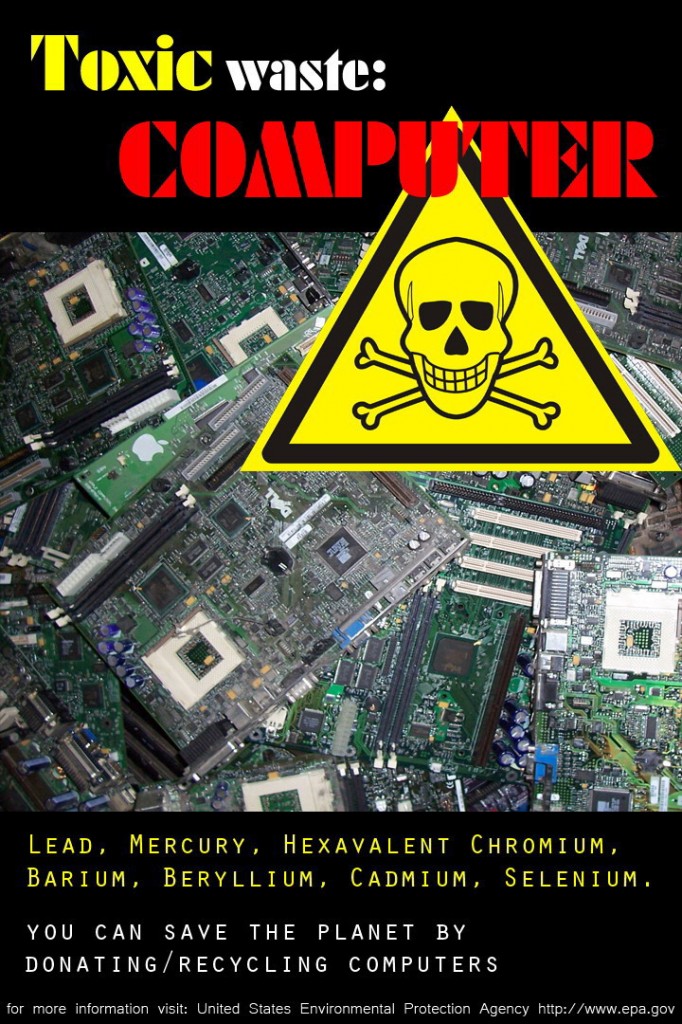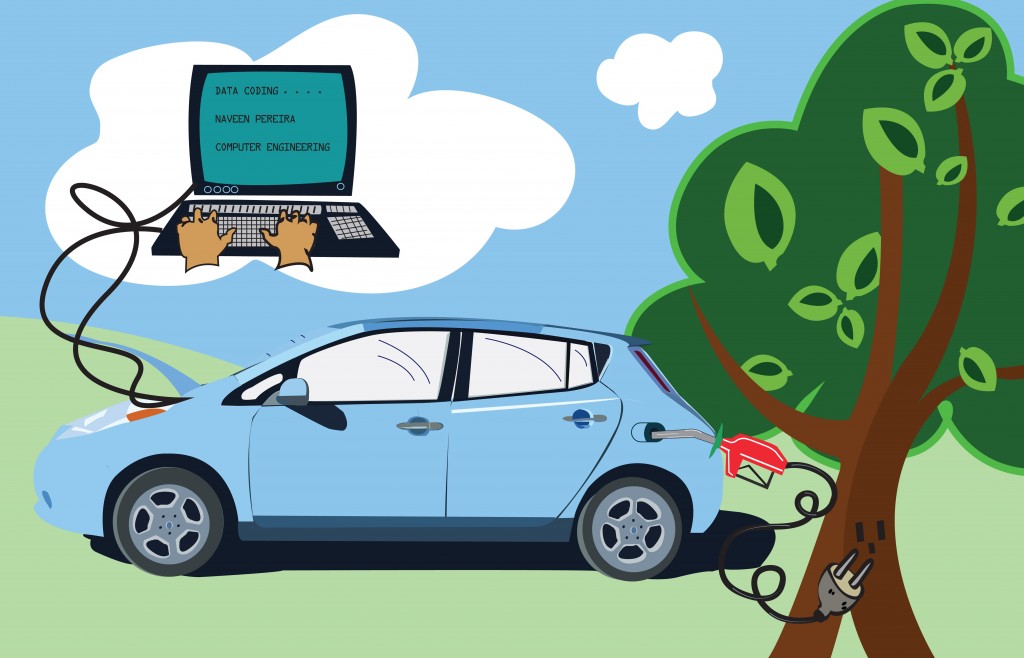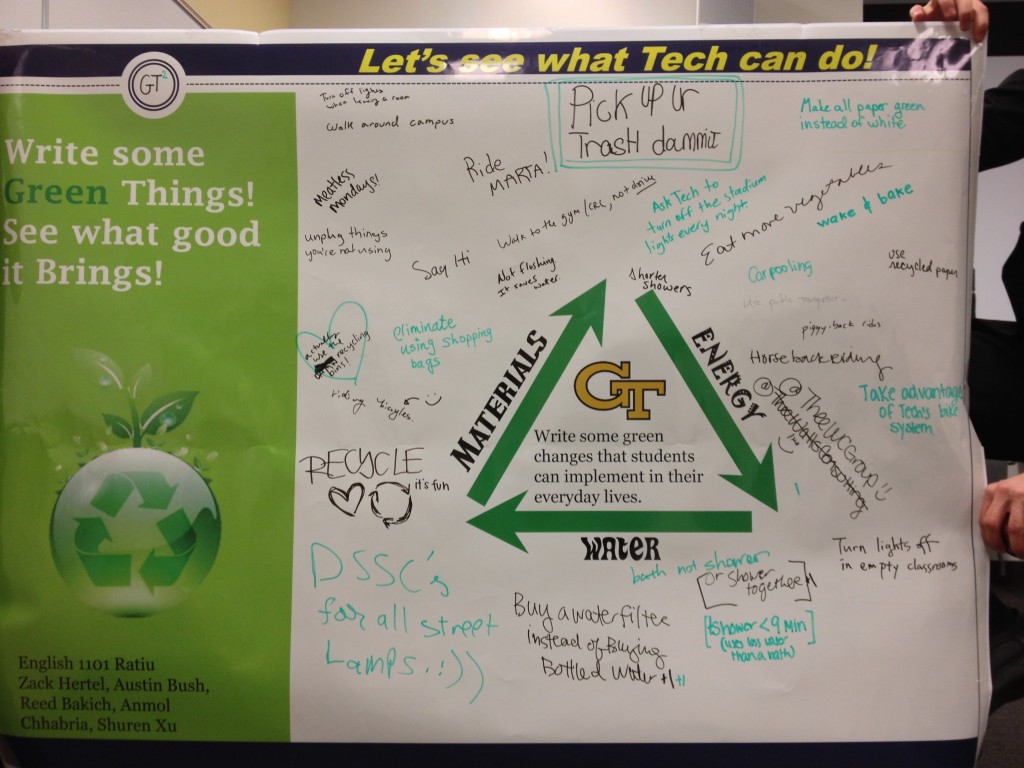In this post, I’d like to write about student posters and start/continue a conversation about the importance of the V in WOVEN.
The Rhetoric of Waste and Sustainability: Teaching writing at Georgia Tech, an institution that prides itself with training problem-solvers, I invite my students to use multimodal communication as a tool to identify and propose solutions to problems of sustainability and resource waste. In a sequence of three major assignments—rhetorical analysis, visual artifact, and group project—students explore waste as a reflection of whom they are, both as individuals and as members of a community; they create visual artifacts documenting the impact their chosen field of study has on society at large and on the environment in particular; and they work in groups to develop multimedia projects of their own interpretation of waste wherein they propose improvements that would make Georgia Tech’s campus more sustainable.
Throughout the course of the semester, the students work individually and in groups to document and, as much as possible, reduce waste from their personal and professional lives. They learn that technology is both the problem and the solution: while it can solve many problems and help reduce waste, it also comes at a price we might not be able or willing to pay. They then recommend we should not rely exclusively on technology to solve the waste problem and argue we should do our best to live a less wasteful and more sustainable life.
For instance, a student decided to analyze plastic waste and, in particular, our reliance on single-use plastic water bottles. In order to investigate the claim that the plant-based glycol used in manufacturing the PET for a certain brand of water bottles is a step in the right direction toward reducing the negative impact of plastic waste, the student contacted a beverage corporation headquartered across the street from Georgia Tech’s campus. While she didn’t get any official response, she found out that, though the science behind this change is accurate, its morality is not: in a world where a billion people don’t have access to safe drinking water, the manufacturer wastes two gallons of water for every single gallon that it produces. I was impressed with her research skills, and I think she made a compelling case when she questioned the efficiency of technological advances.
In the follow-up assignment that asked to visually document waste in his field of study, another student created a poster and analyzed a theme park’s construction and noticed that it claimed land that was once the natural habitat of many species of plants and animals. The main point of his poster, which showed the land before and after the park’s development, was to encourage theme parks to take into account their negative effects on the environment and to persuade them to make better use of the land on which they build. Finally, for their group assignment, other students designed an energy consumption challenge, “Convene for Green,” between residence halls to encourage students to save electricity, water, and paper towels over the course of a semester.
Turned inside out, the rhetoric of waste and sustainability soon becomes a validation of engineering, technology, and problem-solving. Doing more with less, designing more efficient engines, creating more sustainable systems, cutting down costs, saving money, time, and resources, are no longer empty signifiers but crucial tools meant to help students become both better communicators and professionals in their chosen fields of study. In particular, students majoring in industrial systems and engineering are quick to realize the relationship between waste and inefficient systems. For instance, they often tell the class that industrial engineers find ways to minimize wasted material when creating layout patterns for clothing; they determine the best locations for new fire stations, and they design the admissions procedure at hospitals; they also regulate systems for shipments, evaluate the effects of adding robots in a manufacturing line, and design the flow of materials to the assembly line in an automobile factory.
In short, industrial engineers collaborate with other engineers and specialists in various fields to get the work “done” most efficiently. In a sense, then, students learn from one another that they need each others’ future expertise in order to get the work “done,” and, in doing so, they make my job more efficient. They realize that investigating waste in their personal and professional lives serves a purpose that goes beyond the requirements of a writing and composition class: they learn critical thinking skills in order to serve the public good by providing solutions to technical, economic, and social problems.
Here are a few examples of posters students designed to problem-solve waste in computer science. While I could have chosen to showcase posters created by students majoring in other fields as well, I decided to focus on computer science because these posters indicate that the digital natives are remarkably resourceful.
The Infographic: A first example is an informational poster for green computing, which involves the design, manufacturing, use, and disposal of computers efficiently with minimal or no net impact on the environment. As the student explains in a rationale accompanying the poster, this means that manufacturers make parts that are as powerful as current hardware, but more energy efficient; that application developers write more efficient code to maximize resource and memory allocation; and, last but not least, that electronic recycling companies have sprung up in efforts to properly dispose of old devices:
The purpose of the poster is to inform the audience about waste in the field of computer science, so they can become more aware of their wasteful habits and make a more conscious action to protect the environment. In addition to text, the yellow and green design has in the background a large leaf with a circuit bleeding through as if nature and computing have become one amorphous organism. This symbolizes the possibility for technology to be environmentally friendly as long as both manufacturers and users come to understand the importance of green computing. Even though the information in the text boxes seems unequal, the poster is a good example of visual rhetoric through its appealing design and structured display.
The Warning Poster: Another example showcases the hazards of improperly disposed electronics. As the student explains, we all hear about phones bursting into flame in people’s pockets due to the poor heat dissipation of the electronics; we read about toxins leaching into the environment due to improper disposal of old electronics, and we probably know that the IT sector is accountable for 2-4% of global carbon emissions. Yet, she argues, nobody seems to want to be confronted with the inconvenient truth of electronic waste. More limited in scope than the previous one, the poster below raises awareness about the cause and effect of computer waste and makes it clear that we need to reduce it because it creates toxic waste:
The interplay between yellow and red fonts, the black header and footer, together with the skull-and-crossbones sign superimposed on a photo of discarded motherboards showcase effectively the toxic elements of computers. The call to recycle or donate computers in order to save the planet is followed immediately by a link to the Environmental Protection Agency’s website where the audience could find out more not only about the health hazards of computer waste (immune, hormone, nervous, and enzyme system, brain swelling, muscle weakness, damage to the heart, liver, and spleen, just to name a few) but also more information about the proper way to dispose of electronic waste.
The Aspirational Poster: Instead of documenting technological waste, a third example shows ways in which technology can, in fact, reduce waste. The student argues that efficient technology can save time, money, and reduce the toll on resources in the fields of automated manufacturing, automobiles, energy production, and computers. In his poster, he presents not only ways how engineers’ work on electrical car projects helps reduce dependence on fossil fuels, reduce carbon emissions, and help stimulate the economy but also how he can be part of this process as well:
The design shows a computer that is writing a code to “program” solutions for the future: a blue electric car is linked both to a computer and to an outlet attached to a tree that remains green. Without completely circumventing the hotly debated topic of sustainable sources of electricity (ranging from gas, oil, nuclear to solar, wind, biomass, etc.), the poster imagines technological advances that would not harm the environment. The transition from a gas pump to a “natural” outlet signifies the gradual changes that an electrical engineer can help promote. Equating reducing waste with a sustainable system, the student argues for a cost-effective future with a low environmental impact and efficient sources of energy.
Going very multi-modal: Last but not least, here is a group poster or, as the students called it, a Student Interactive Board. Unlike the previous posters designed to inform, raise awareness about toxic waste, and envision possible change, this poster is an invitation to dialog. Part of a very multimodal group project meant to pioneer ways through which students could make the campus even “greener,” the board was designed to gain a little extra “Tech Inspiration:”
Displayed in the main lobby of CULC for a few days, the poster invited students and faculty to write suggestions for a sustainable lifestyle. These ideas were later incorporated into the group project which consisted of (1) scripting, filming, and editing a short movie promoting green life changes, (2) creating a prezi about reducing waste of water, energy, and materials on campus, (3) giving a group presentation of their project, and (4) writing individual reflections about their experience working together.
As it turned out, the objective of using the poster was not only to receive feedback from the campus community but to have them read each others’ ideas. This, then, is also the goal of my brief presentation of student posters. With the end of yet another semester within sight, I’d love to know what you think about student posters and how you incorporate them in your teaching.





